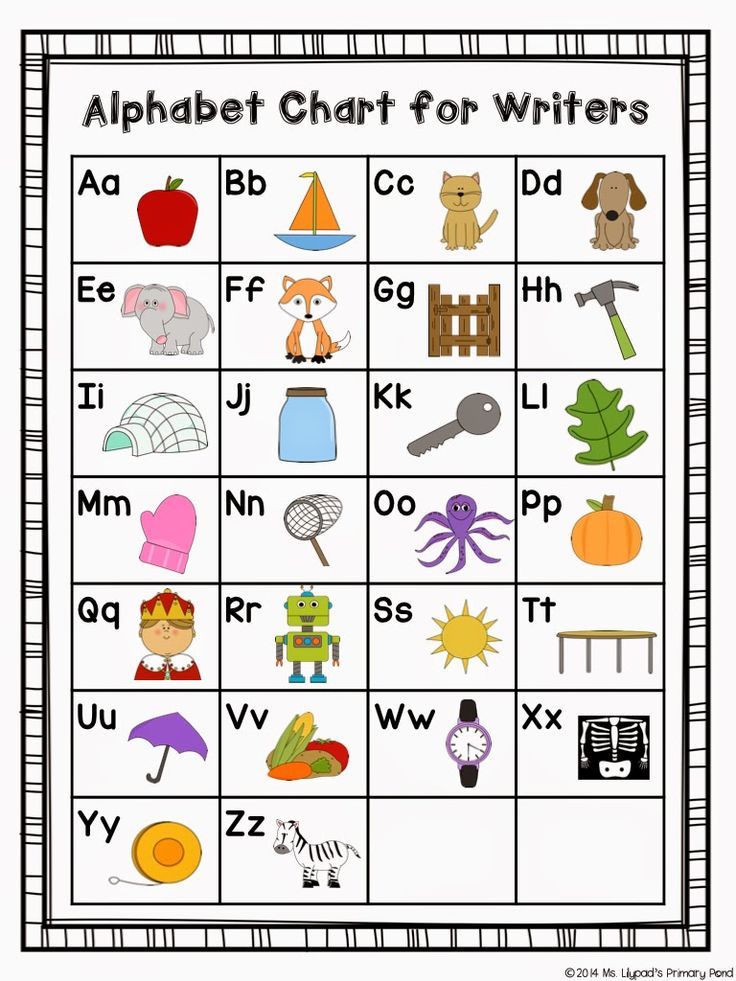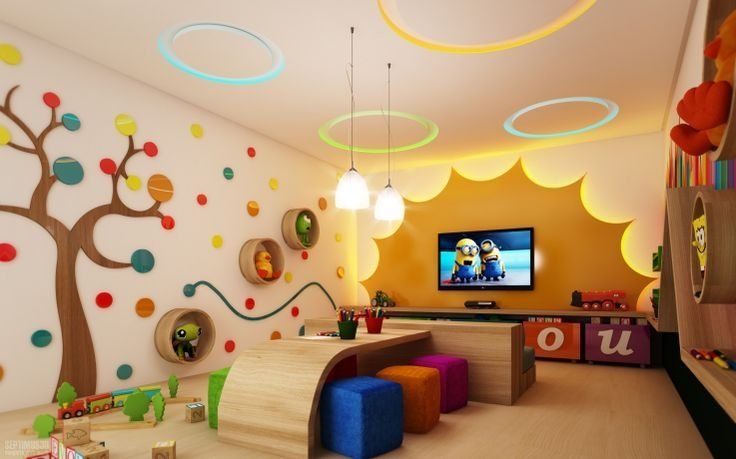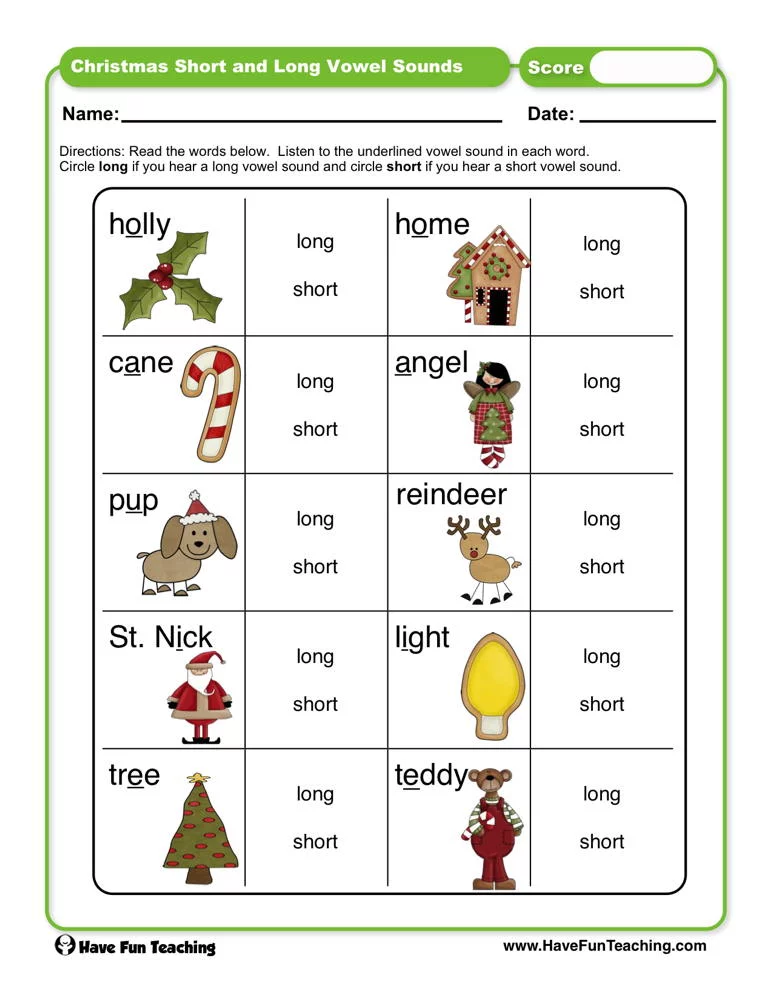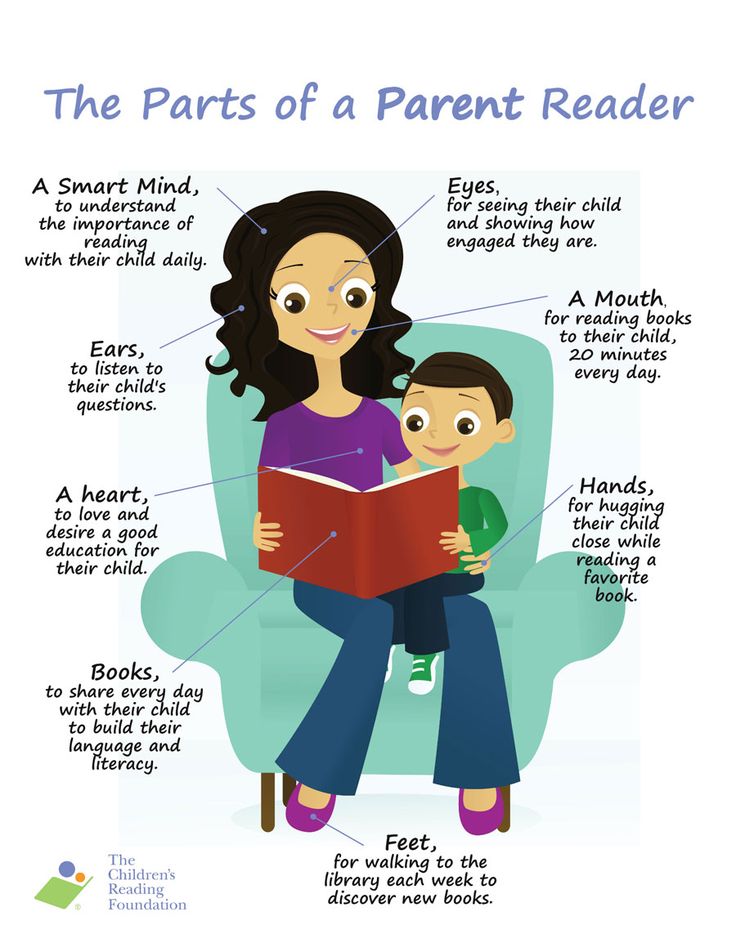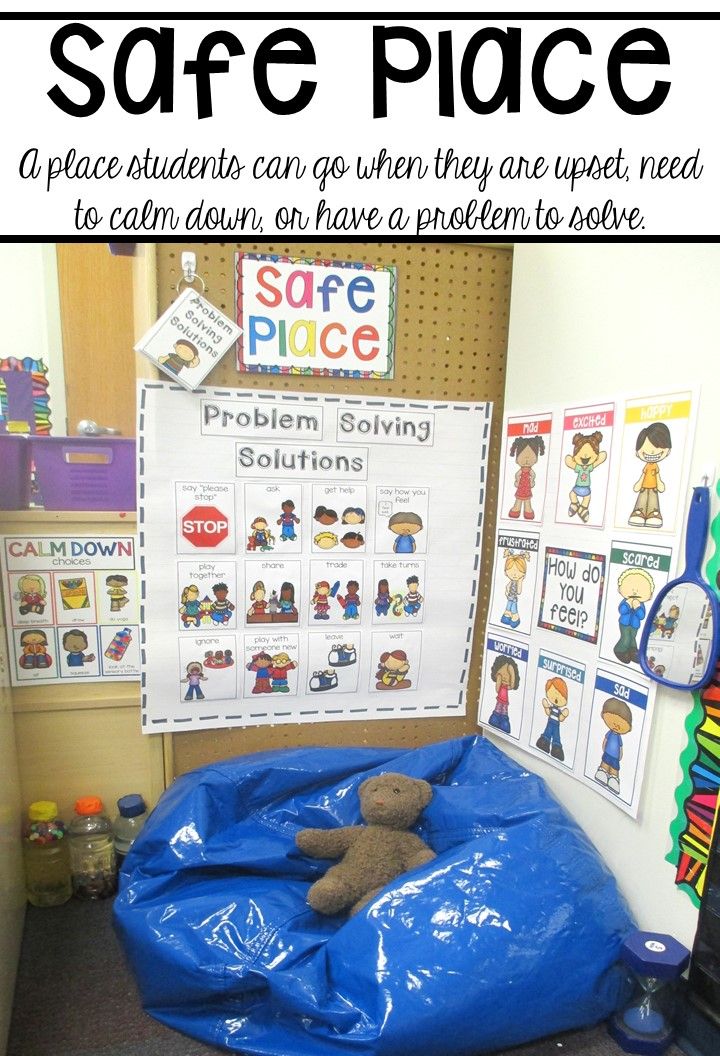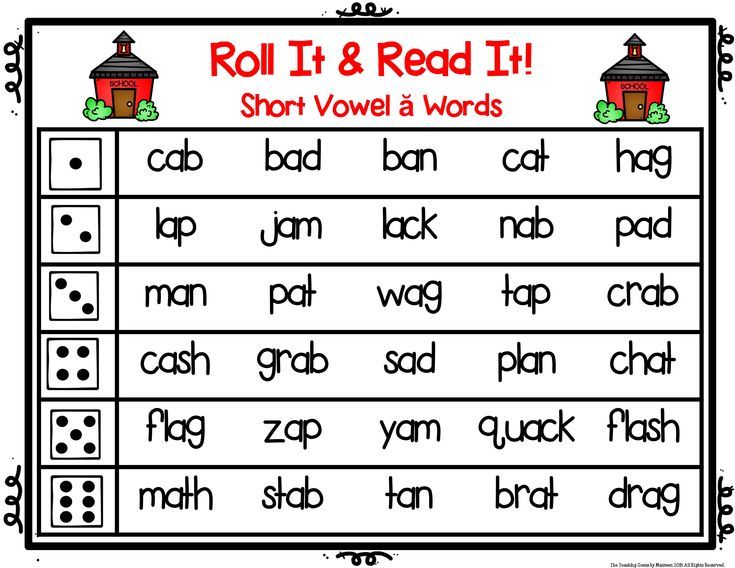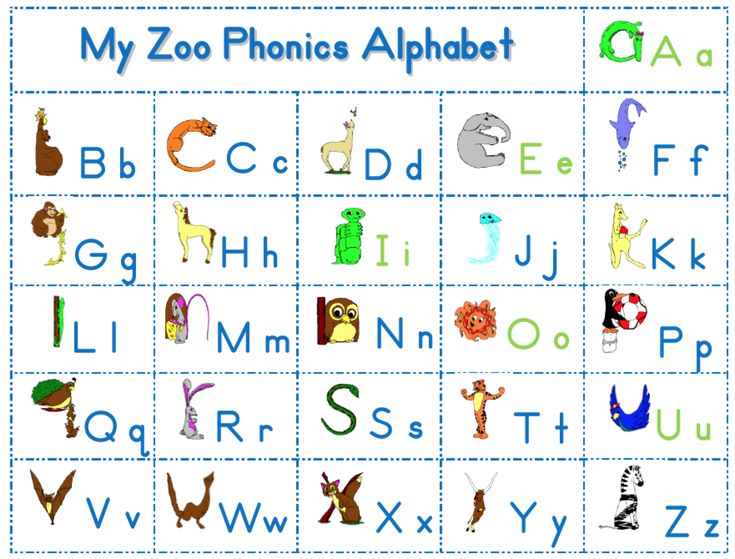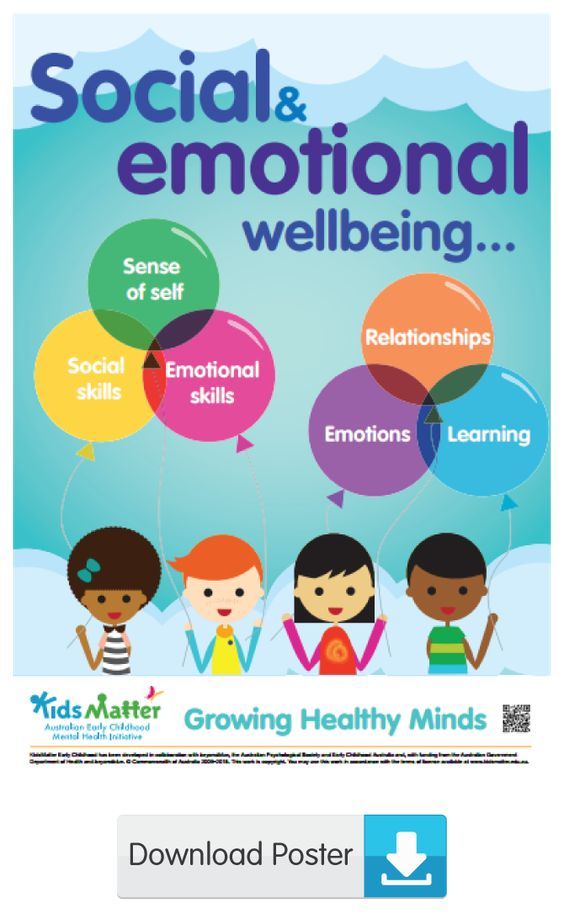Teaching the alphabet to kindergarten
How to Teach the Alphabet
misskindergarten Leave a Comment
School will resume before we know it! Maybe you have already started working with your little one at home over the summer, or you are looking for new ideas on how to teach the alphabet, I have some fun suggestions for your preschoolers and kindergarteners to jumpstart your fall. Now is the perfect time to gather materials and curriculum ideas to prepare for the school year!
As we all know, reading is an essential milestone for kids. However, before reading can begin, we need to teach the alphabet – letter shapes, names of the letters, and letter sounds.
Why Do We Need To Teach the Alphabet?
The alphabet is a stepping stone to reading words. Words will progress to sentences. From there, sentences will become stories, essays, books, and so on. Introducing the alphabet in a multi-sensory way will get you started on your homeschooling journey.
How Can You Teach the Alphabet?
The key to a curriculum or unit for homeschoolers (or any learner) is to keep it FUN, engaging, and hands-on! Approaching a subject from many angles helps with retention, progression, and mastery. Merely teaching the letters of the alphabet by doing a worksheet may not work for many learners. It can be tedious. But, when the child sculpts the letter from playdough, recites a fun poem, or makes a craft, learning will be fun, creative, entertaining, and long-lasting. Add in games, song, and movement, and you’ll have eager little beavers, ready to learn!
Printable & Resources
- You may want to introduce the letters of the alphabet with alphabet practice pages. This resource works on upper and lowercase letters in addition to handwriting and letter sounds.
- Make little books (fold a sheet of paper into a booklet) for each letter of the alphabet. Cut out pictures from magazines for the letters of the alphabet. Glue your images inside. Alternatively, you can draw pictures or use stamps and stickers.
- Shape the letters using play-doh mats and play-doh. Kids love hands-on activities, and this will be no exception. Laminate a set of these mats to use repeatedly with play-doh or tracing with dry-erase markers.
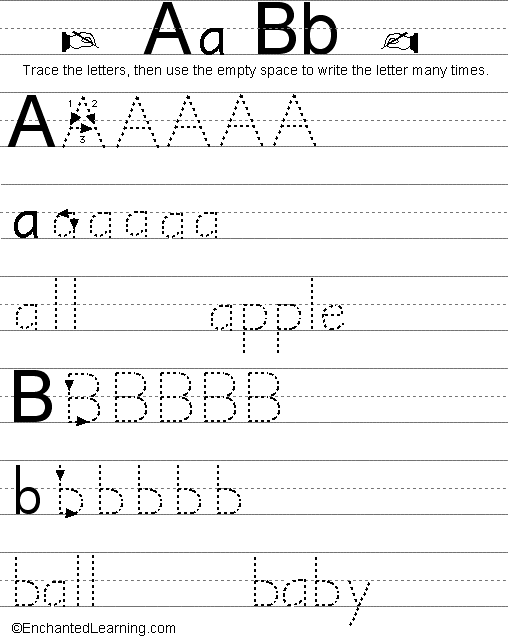 Or, print a set and use with crayons, markers, and pencils.
Or, print a set and use with crayons, markers, and pencils. - Use rhyme and repetition with these alphabet practice poems to reinforce letters and their sounds. Recite the poem and then find the correct matching letter. This set includes uppercase letter practice, as well as letter sounds practice. These poems last throughout the year with the following themes: Sept- apples, Oct- pumpkins, Nov- turkeys, Dec- mittens & trees, Jan- snowflakes, Feb- hearts & groundhogs, Mar- shamrocks, Apr- raindrops, May- flowers, and June/July- beach balls & suns.
- Make an interactive alphabet journal that works on beginning letter sounds. Color, cut, and glue the pages in a journal. You can even save this to use as a dictionary for writing.
- Make some fun paper alphabet crafts for each letter of the alphabet to combine art with learning. Also included are sentence starter pages for students who have already mastered their ABCs! This fun activity also practices fine motor skills with cutting and gluing.
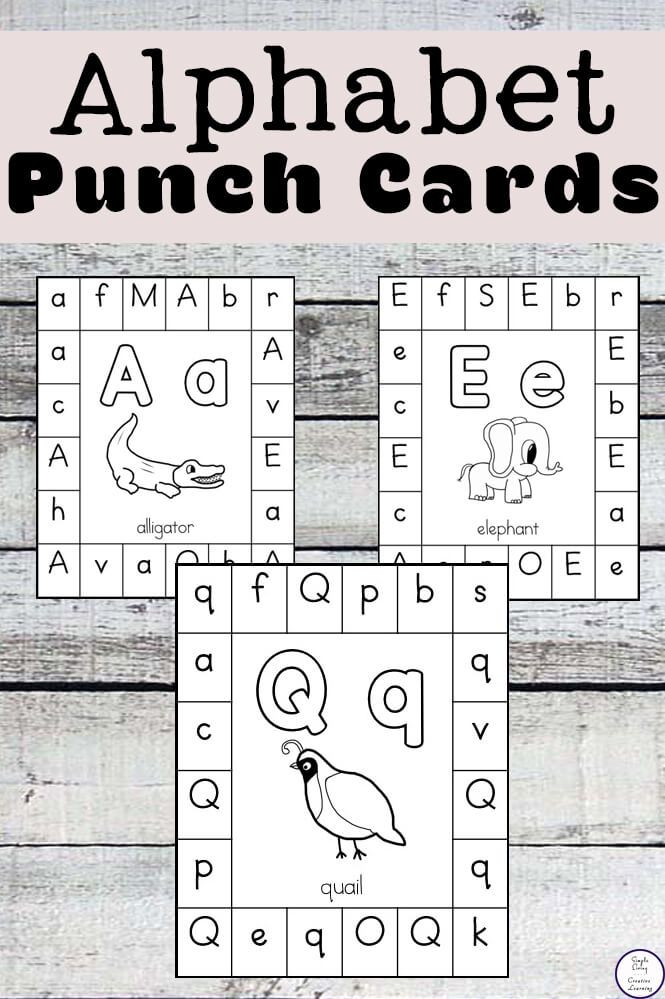 Crafts included are: A-apple, B-bee, C-cat, D-dog, E-egg, F-football {American football}, G-golf, H-hat, I-ice cream, J-Jack-o-lantern, K-kite, L-ladybug, M-mailbox, N-nail, O-octopus, P-pocket, Q-quilt, R-road, S-soccer ball, T-turtle, U-umbrella, V-volcano, W-watermelon, X-xylophone, Y-yo-yo, and Z-zipper.
Crafts included are: A-apple, B-bee, C-cat, D-dog, E-egg, F-football {American football}, G-golf, H-hat, I-ice cream, J-Jack-o-lantern, K-kite, L-ladybug, M-mailbox, N-nail, O-octopus, P-pocket, Q-quilt, R-road, S-soccer ball, T-turtle, U-umbrella, V-volcano, W-watermelon, X-xylophone, Y-yo-yo, and Z-zipper. - The alphabet mega bundle has a series of resources, including the alphabet letter sort, alphabet tracer cards, fine motor alphabet letters, and spin & write letters (in addition to the alphabet journal and alphabet printables mentioned above). Use some of these included resources like flashcards and play memory and matching games. Place them in alphabetical order, but remove some and have your child guess which one is missing.
Enhance the Experience
Here are some additional ideas to add some more fun to foster learning naturally.
- Read books focused on the letters of the alphabet. My favorite is Chicka Chicka Boom Boom, but there are so many out there! Look out for another post that includes more book ideas!
- Use videos online (YouTube, SafeTube) that review, teach, and reinforce letters and letter sounds.
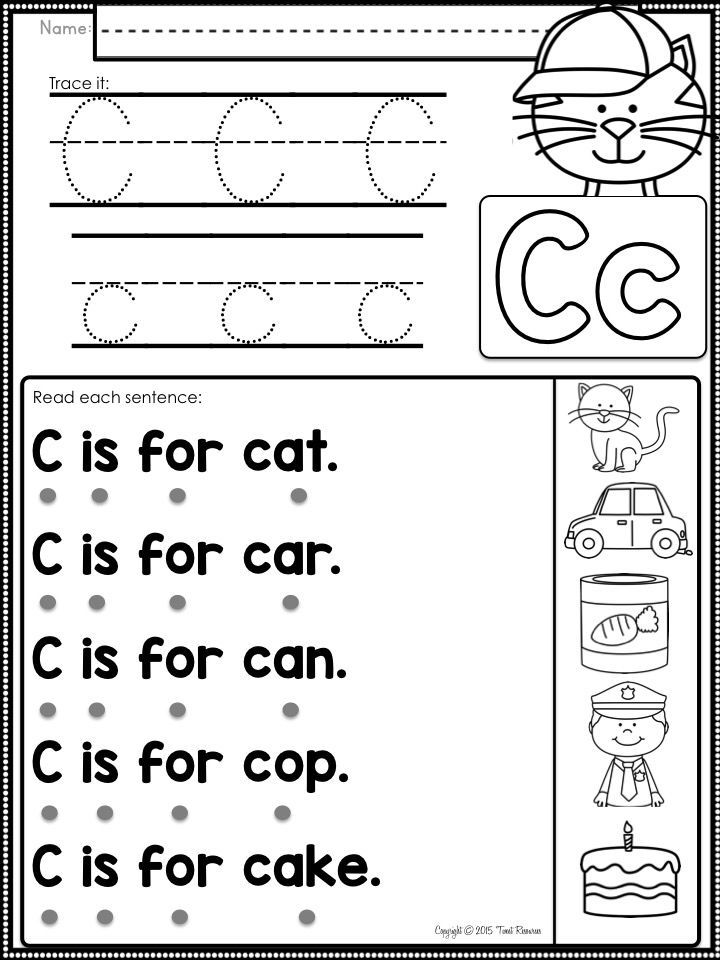 The rhymes, poems, and musical nature of videos will help kids understand quickly.
The rhymes, poems, and musical nature of videos will help kids understand quickly. - Add some movement to your letter unit. Can you make the letter T with your body? What about the letter W? Can we work together to make the letter A?
- Get creative and play some alphabet games. I love the flyswatter game. Write down the letters on a whiteboard, or have flashcards scattered across the table. Shout out a letter, and your kid swats the letter with a flyswatter. Check out my alphabet Pinterest board for some fantastic alphabet games.
Practice the Alphabet Throughout the Day
As you go about your day, identify things in the house that begin with a specific letter. Ask your kiddos if they can find other items and objects that start with that same letter.
You can also focus on a Letter of the Day or Letter of the Week. Try to find things in your house that begin with that letter. Sing a song using that letter – or even better, use your creativity and make up a song! Make a new recipe that starts with the letter of the day or find some fun food ideas on Pinterest.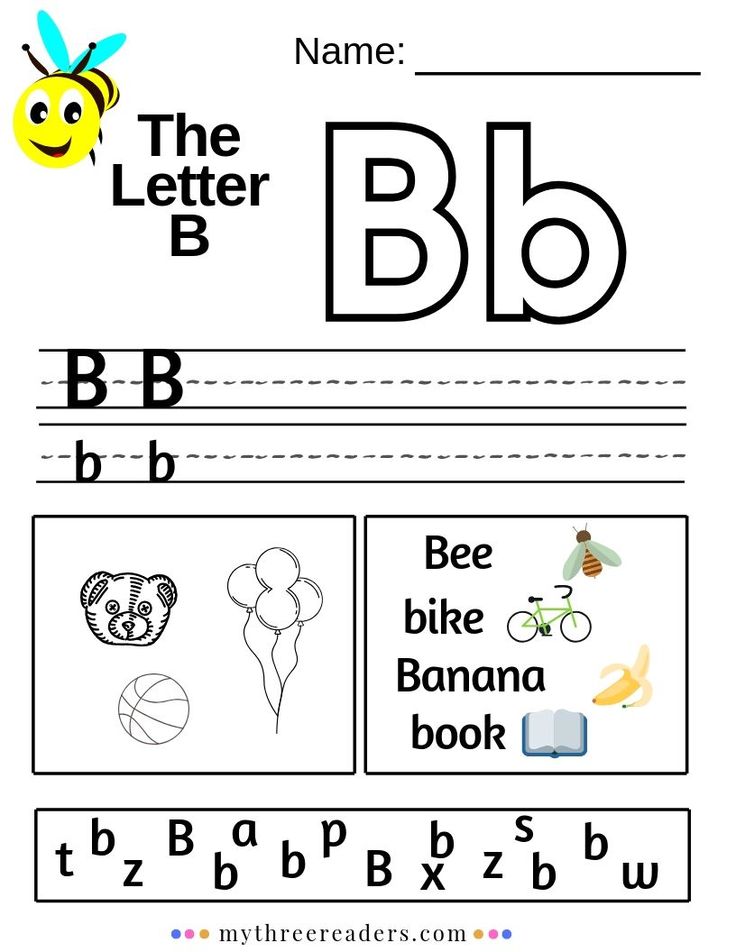 For instance, if you’re working on the letter B, you can make a BEACH treat. Put some blue frosting on one side of a graham cracker and add some goldfish. Now you have a little beach to go with your letter B theme!
For instance, if you’re working on the letter B, you can make a BEACH treat. Put some blue frosting on one side of a graham cracker and add some goldfish. Now you have a little beach to go with your letter B theme!
Another idea is to become sleuths for a day and create a scavenger hunt in your home. Look for objects that start with a letter, objects that begin with a specific sound, or the matching upper and lowercase letters.
Sing the ABCs while you are washing hands!
There are many, many ways to keep the learning going naturally all day long!
Download My Printable Resources
Transitioning to homeschool shouldn’t be dreadful. The more excited and prepared you are, the more your kids will enjoy it. Beginning with the ABCs is an essential step, but keep it fun to nurture learning. The above mentioned kid-approved resources are found by clicking these links:
- alphabet practice pages
- alphabet play-doh mats
- alphabet practice poems
- alphabet interactive journal
- alphabet crafts
- alphabet mega bundle
Let me know what activities you liked the best!
Phonics, Alphabet, Letter Sounds
Previous Post Learning With Playdough Mats
Next Post Hands-on Ideas for Name Writing Practice
First Sound Fluency
First sound fluency is a way to measure your students' understanding of initial sounds in words. As your students are working on developing this skill, here is a fun way to help them practice finding the first sound of a word quickly. You can grab these for FREE by signing up for my email list below.
First Name
Your email address
As your students are working on developing this skill, here is a fun way to help them practice finding the first sound of a word quickly. You can grab these for FREE by signing up for my email list below.
First Name
Your email address
Hello, I’m Hadar
Welcome to Miss Kindergarten. I’m so happy you’re here!
If you are looking for hands-on, engaging kindergarten activities, you came to the right place! I’m here to save you time by sharing tried and true kindergarten resources, and hopefully spark some ideas for your own kindergarten lesson plans!
Whether you need ideas to teach reading, sight words, math, or even some fun crafts, I have you covered. My ultimate goal is to help passionate educators and parents to young kids gain their valuable time back!
If you want to stay connected with Miss Kindergarten, please follow me on social media and be sure to sign up for the newsletter below.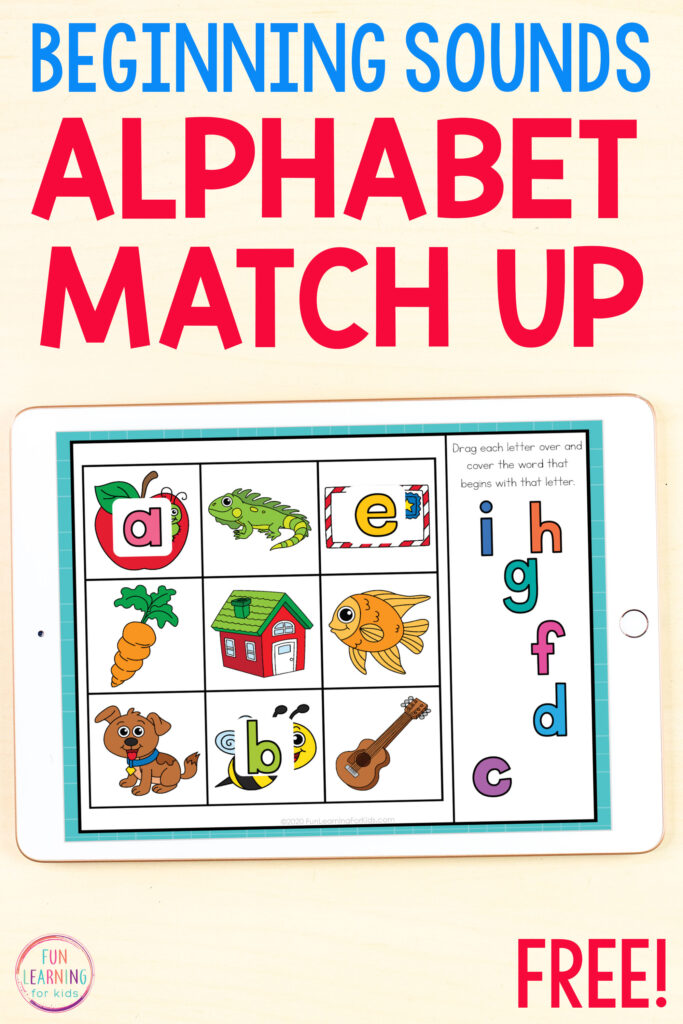
More About Me Contact Me
6 Tips For Teaching The Alphabet in Kindergarten
When it comes to teaching the alphabet in Kindergarten, it can still feel a little bit like throwing spaghetti at the wall. You try all the things hoping that one of them is the best way to teach the alphabet in Kindergarten and make it stick.
It doesn’t have to be that way, though!
These 6 tips for teaching the alphabet are tried and true for helping your kindergarteners learn the alphabet and letter sounds.
1. Introduce Letters By Their Sound
When it comes to reading, it’s important that students have a strong connection between a letter and its sound. We want our students to recognize that print represents sounds, and the best way to do that is to teach letter sounds first.
You might be thinking – how does that even work? How do I teach the letter sounds when I haven’t even shown students the letter yet?
Here’s what this looks like in my classroom:
When I introduce a new letter, I say, “We are learning a new sound today.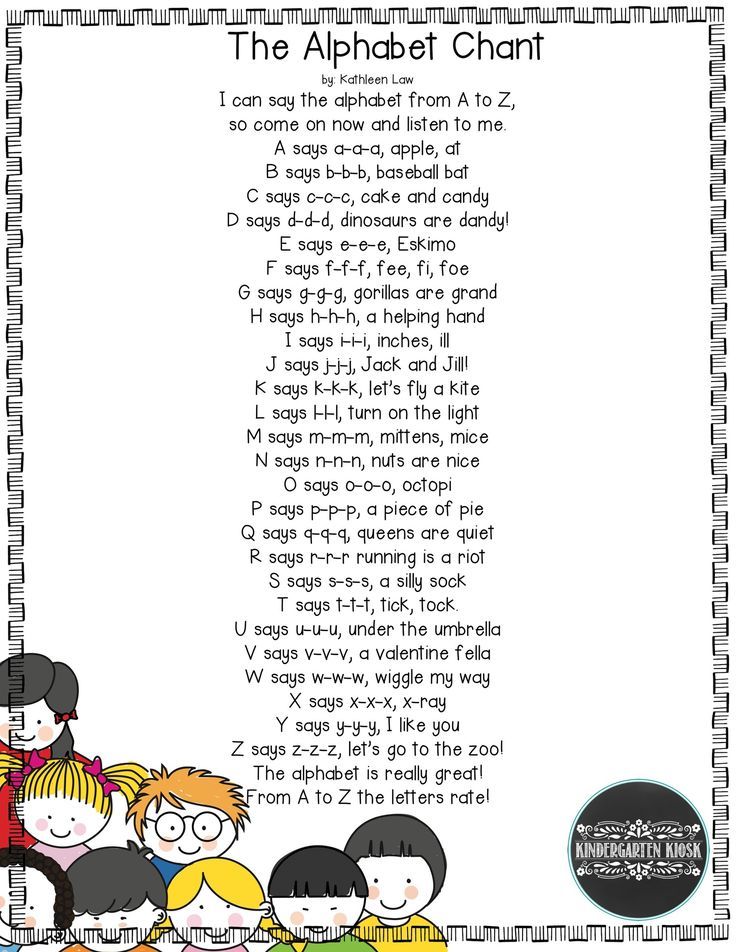 That sound is /b/. Can you say /b/? /b/ like a bouncing basketball. Can you say /b/ as you pretend to bounce a basketball? B-b-b.”
That sound is /b/. Can you say /b/? /b/ like a bouncing basketball. Can you say /b/ as you pretend to bounce a basketball? B-b-b.”
Then, after we practice the sound, I teach the alphabet letter, “We spell the sound /b/ with the letter Bb. This is what a Bb looks like.”
Super simple, but this has a huge impact on students learning the alphabet!
This then leads into my next tip:
2. Use Real Photos Whenever Possible
If you have students who are English Language Learners or have a language delay or low background knowledge (and you most likely do), then using real photos to introduce vocabulary is essential.
However, using real photos to when teaching the alphabet in Kindergarten is beneficial to all of your students!
Reading text is not something that comes naturally to humans. Our brains are wired to remember images. So if students can connect a word to a real image, it’s much easier for their brains to make a connection.
After introducing the letter sound and letter, the next step for teaching the alphabet is introducing vocabulary words that start with that letter.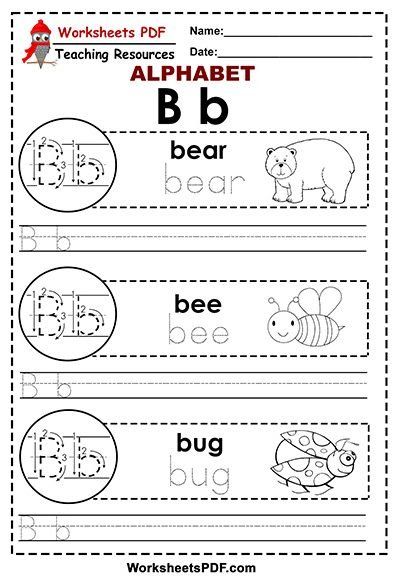
In my kindergarten classroom, this looks like: “This is a bear. Bear begins with /b/. Do you remember how we spell /b/? That’s right, Bb! Repeat after me – B, bear, /b/.”
We repeat that with multiple pictures and vocabulary words that begin with the target letter.
3. Use a Multi-Sensory Approach
When teaching the alphabet in Kindergarten, it is important to incorporate as many parts of the brain as possible to help build those connections.
One easy way to do this is to add in alphabet hand motions! And if you can make those alphabet motions cross the midline, even better.
Our alphabet hand motions relate the the letter sound. For example, when we learn the letter Bb, we say /b/ while bouncing a ball.
Make sure that the alphabet motions that you choose are meaningful to your students. You wouldn’t want students to make yak horns while saying the /y/ sound if they’ve never seen a yak before!
When we go through our alphabet chart routine during our morning meeting, we make the alphabet hand motions as we say each letter sound.
4. Expose Students To a Variety of Fonts
When teaching each letter of the alphabet, of course we want properly-formed, printed letters.
But students won’t always see letters that way in the real world, and it’s important that they are able to recognize a letter no matter what form it’s in.
Font sorts, magazine hunts, and coloring by letters in a variety of fonts are all great activities for exposing students to the alphabet in a variety of forms.
5. Explicitly Teach Letter Formation
Depending on who you’re talking to, you’ll most likely hear differing opinions on whether or not you should spend time teaching proper letter formation.
Do students really need to know how to form letters properly? Is it developmentally appropriate to teach letter formation?
Here’s why I say wholeheartedly YES! Spend the time teaching letter formation!
As our students learn letter sounds, we want them to begin using that sound knowledge in their writing.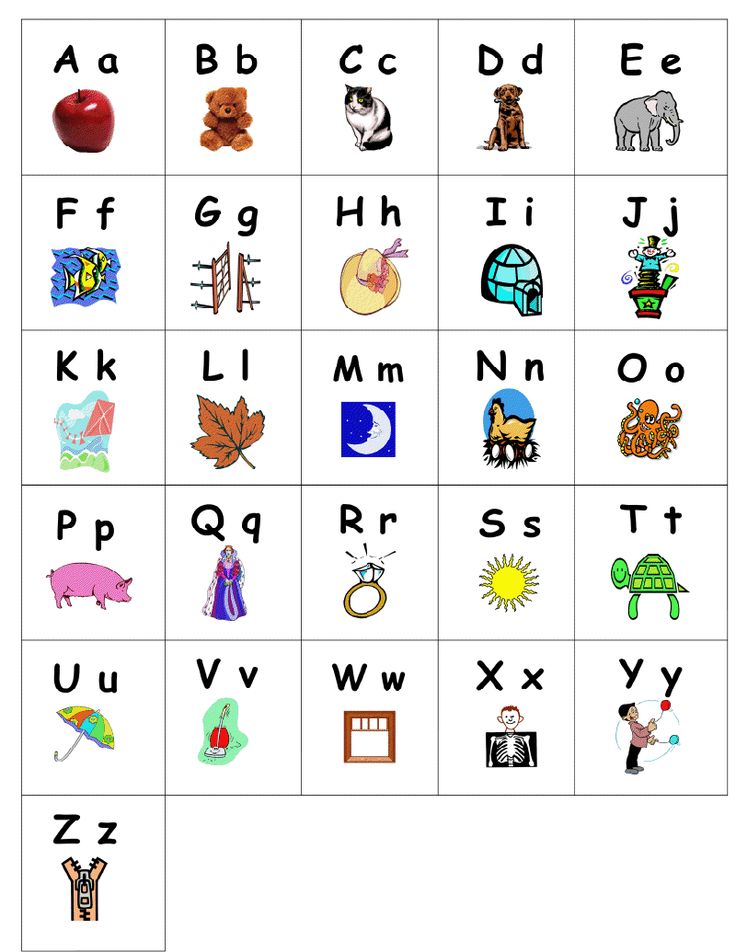
If we work on handwriting and letter formation up front, students have time to build their muscle memory. That means, as they’re writing, they don’t have to dedicate brain energy to “How do I form this letter?”
Instead, they can fully concentrate on sounding out words.
This is also why you should carefully consider the order you introduce your letters in.
There are many different opinions on what order to teach letters in Kindergarten, and you can choose the best way for you and your class. However, you will want to make sure similar letters are spread out enough that students can gain mastery of one before adding in the next (think b, d, p, q).
6. Make It Fun!
We know that having routine, systematic phonics instruction is best practice. But that doesn’t mean it has to be boring!
There are many ways to make teaching the alphabet in Kindergarten fun for both students and yourself, including many of the tips listed above.
We love alphabet crafts when we are teaching letters and letter sounds in Kindergarten! These crafts are a great way to incorporate fine motor and cutting practice, listening and following directions, as well as helping students make a connection between the letter and beginning sounds.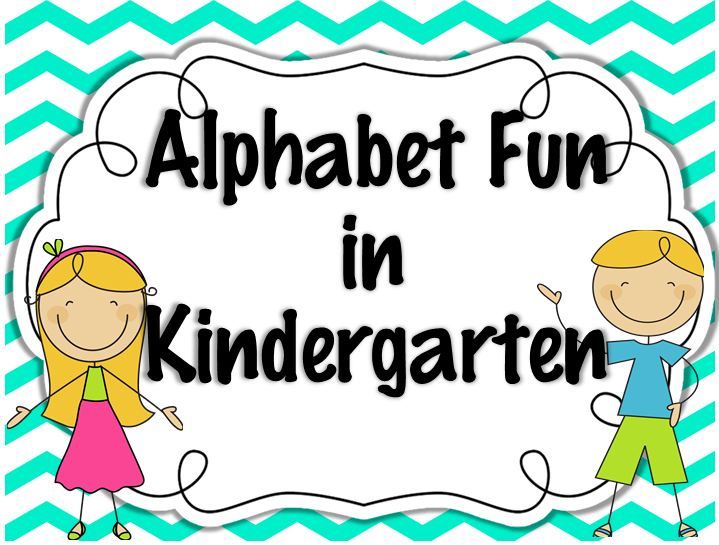
Alphabet interactive notebooks are also a favorite in my classroom. These notebooks are simple and no prep for me, but they are fun for my students and allow them to work with the target letter in many different ways.
Teaching The Alphabet in Kindergarten
Are you looking for an easy to follow resource for teaching the alphabet in Kindergarten that’s developmentally-appropriate and effective? You can find it all in Empowering Little Readers™ Phonics Unit 1: introducing Letters.
Check Out This Resource From My Shop!
Kindergarten Phonics Unit 1: Introducing Letters | Empowering Little Readers
Everything you need to introduce the alphabet in a fun and engaging way!
Buy Now!
This unit has everything you need to teach the alphabet in Kindergarten including:
- Scripted, easy to follow lesson plans
- Real photo materials
- Alphabet motions
- Alphabet crafts
- Worksheets and printables
- Letter formation practice
- And more!
Danielle W. said, “My students loved this and I noticed a big improvement in letter recognition and letter sounds. One kiddo went from knowing 0 to 20 letter sound in a few short weeks.”
said, “My students loved this and I noticed a big improvement in letter recognition and letter sounds. One kiddo went from knowing 0 to 20 letter sound in a few short weeks.”
If you want an entire year of systematic, effective phonics instruction planned out for you, you can grab the Empowering Little Readers™ Phonics Curriculum here.
Check Out This Resource From My Shop!
Kindergarten Phonics Curriculum for the Year Bundle | Empowering Little Readers
Never worry about planning your kindergarten phonics instruction again! This curriculum has everything you need.
Buy Now!
Pin this post for later:
Do you love free stuff?
CVC Decodable Readers
Sign up for my FREE email newsletter and receive five short vowel decodable readers!
I need these!
You May Also Enjoy These Posts
Reader Interactions
Hot in the Shop
More Products
All We're Missing is You!
Join us over on Facebook for even more great resources, ideas, and teaching tips for kindergarten and early elementary teachers!
Join Us on Facebook
Welcome Friends!
My name is Natalie and I am the face behind Natalie Lynn Kindergarten.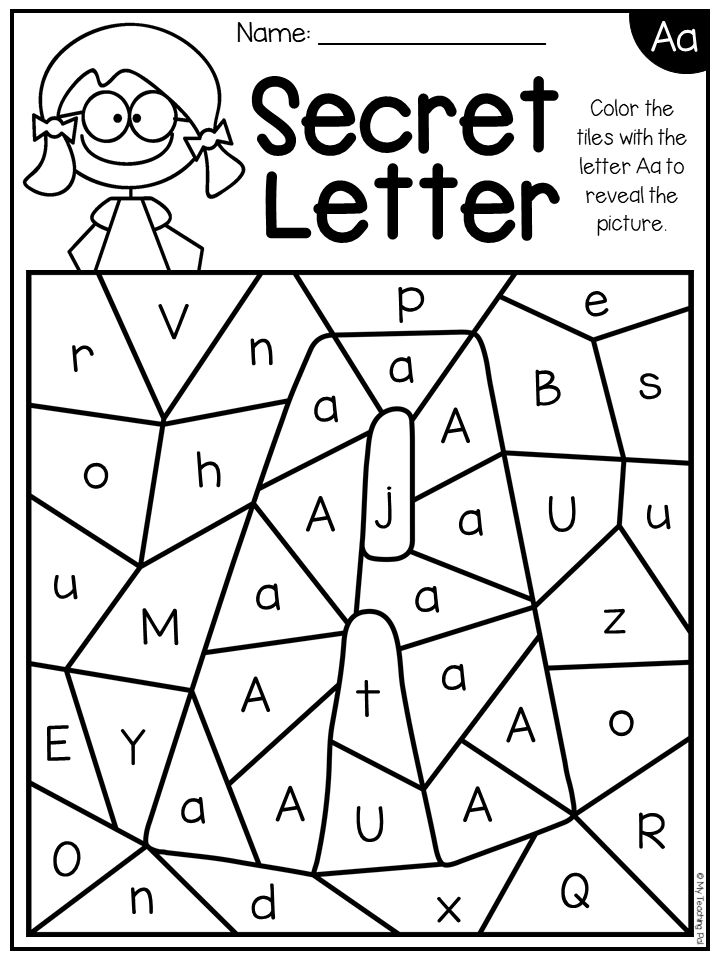 My passion is creating hands-on and engaging resources for the classroom and helping teachers to make learning FUN again! I love showing teachers how they can give students ownership over their learning and create meaningful learning experiences.
My passion is creating hands-on and engaging resources for the classroom and helping teachers to make learning FUN again! I love showing teachers how they can give students ownership over their learning and create meaningful learning experiences.
More About Me
Manage consent
Adaptation and modification of the course "On the way to the ABC" in the educational system "School-2100"
Full mastery of the native language in preschool is essential condition for solving mental problems, aesthetic and moral education of children during the most sensitive period of development.
In the complex program "Kindergarten 2100" the solution of this problem is carried out in the process classes on the development of speech course "On the way to ABC" 1.2 hours with children 4-5 years old (first year of study) and preparation for literacy course "On road to the alphabet "3.4 hours with children 5-6 years old (second year training), as well as since 2009course "On the way to alphabet" 5 hours. With children 6 - 7 years old. Classes are held according to the textbook-notebook "On the way to the ABC" part 1.2; 3, 4.5.
With children 6 - 7 years old. Classes are held according to the textbook-notebook "On the way to the ABC" part 1.2; 3, 4.5.
Problems encountered during adaptation course:
- insufficient attention is paid to solving such tasks as: teaching retelling, teaching drafting descriptive story, descriptive story plot picture, according to a series of plot pictures.
- up to 5 years no tasks for highlighting a sound in a word (currently in the course "On the way to the ABC" 1.2 some such tasks are introduced).
- educators use ready-made material from methodological guide, not considering it necessary recycle it with children in mind of your group.
- irrationally use the proposed material.
- the lesson summary does not indicate the purpose of the or other task.
- use of sound symbols. To each sound corresponds to a certain sound picture.
 Sound pictures are not always associated with the image that they offer the authors.
Sound pictures are not always associated with the image that they offer the authors. - The sound characteristic passes through the sound symbol.
- there is no description of the position of the organs of articulation.
- there is no methodology for teaching a child to merge a syllable.
- questions for educators arise when familiarity with iotized vowels.
- irrational study sequence sounds.
- attachment to notebooks.
- the same type of speech games and tasks.
Issues identified during course trials make you think about their causes and encourage the search for new approaches to work, more content and quality.
The purpose of the work is to adapt the course "On the way to ABC" to the peculiarities of the development of children of our preschool institution.
Tasks:
- Solve the problem of the development of coherent speech.
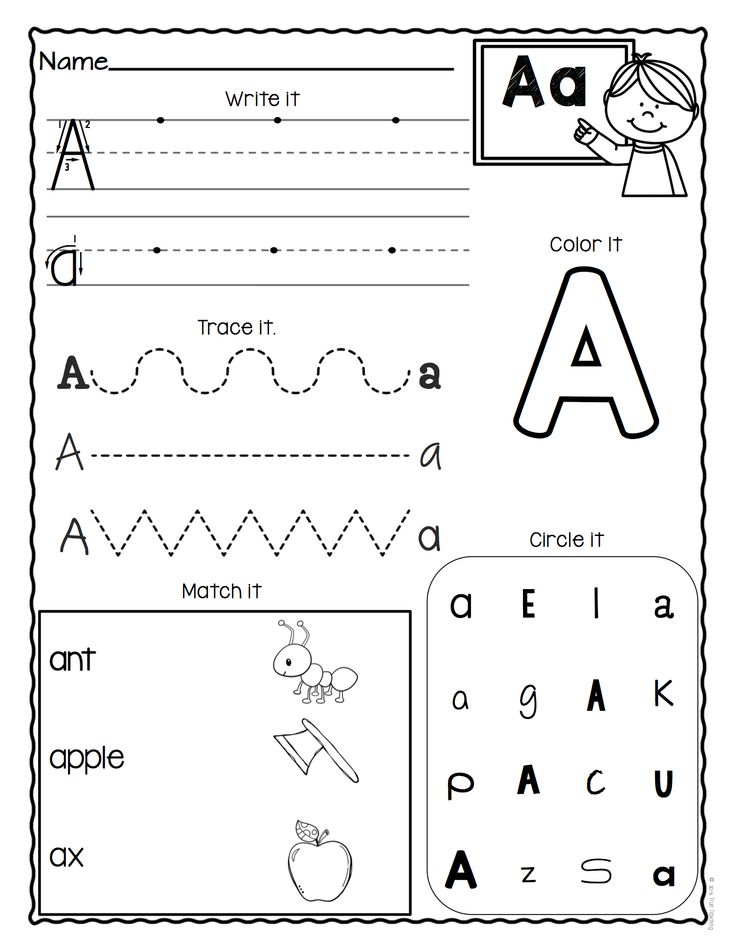
- Improve the lessons of the course "On the way to ABC" 3.4 hours (preparation for literacy) through the use of speech therapy teaching sound-letter analysis.
- Using an interactive whiteboard to improving the efficiency of mastering the content course for older preschoolers. 9March 0011 2005:
- Classes for the development of coherent speech were introduced in all age groups once a week. Promising plans are made together with educators.
- Literacy classes are taught by teachers - speech therapists.
In the 2005-2006 academic year, educators, together with speech therapists of preschool educational institutions made long-term plans for development of speech, based on teaching aids: Ushakova O.S., Strunina E.M. "Methodology of development speech of preschool children", Ushakova O.S., Arushanova A.G., Maksakov A.I., Strunina E.M., Yurtaikina T.M. "Classes on the development of speech in kindergarten, speech therapy aids E.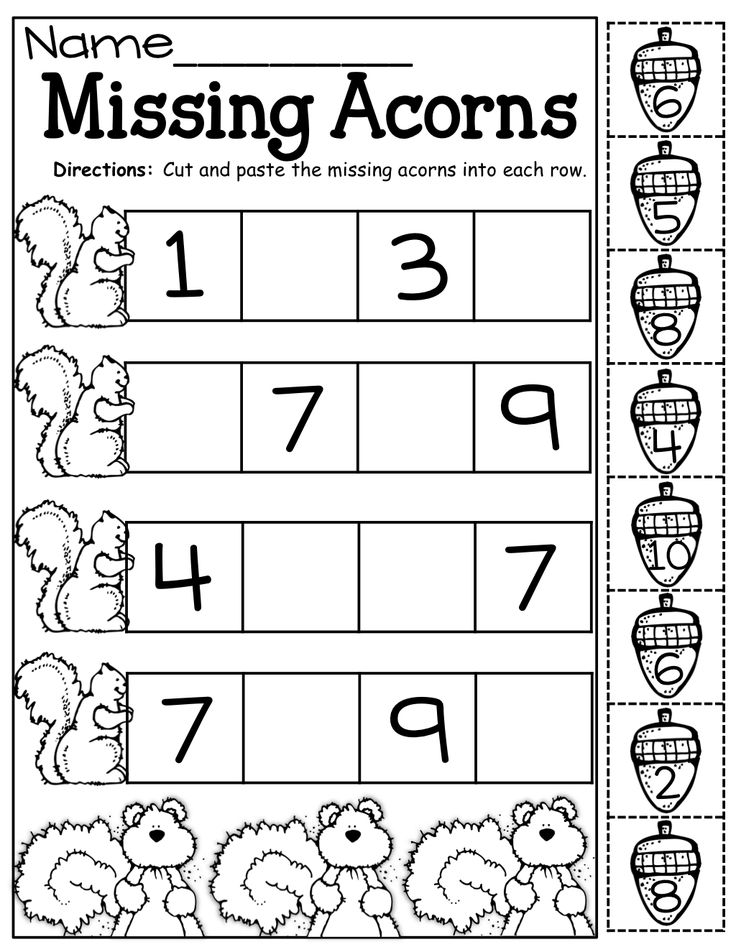 L. Sukhareva "Learning while playing", Tkachenko T.A. "Formation and development of coherent speech". Some notes of classes educators developed in collaboration with speech pathologists. We suggested that the introduction of development classes coherent speech will help us decide not only the problem of children's ability to compose stories, but also another problem is the lack of tasks for development of sound culture of speech in training courses up to 5 years. Educators will have the opportunity introduce tasks for the development of phonemic hearing and development of sound analysis skills, corresponding to phonetic-phonemic abilities of children from 3 to 5 years old. But there was another problem - there are no pictures for these methodical allowances or they are in a dilapidated condition. Methodological service of the preschool educational institution together with teachers - speech therapists decided to purchase picture material N.V. Beggarly. And since the courses programs "Kindergarten 2100" do not offer abstracts of lessons on teaching children storytelling and retelling as the basis we took classes and demonstration material N.
L. Sukhareva "Learning while playing", Tkachenko T.A. "Formation and development of coherent speech". Some notes of classes educators developed in collaboration with speech pathologists. We suggested that the introduction of development classes coherent speech will help us decide not only the problem of children's ability to compose stories, but also another problem is the lack of tasks for development of sound culture of speech in training courses up to 5 years. Educators will have the opportunity introduce tasks for the development of phonemic hearing and development of sound analysis skills, corresponding to phonetic-phonemic abilities of children from 3 to 5 years old. But there was another problem - there are no pictures for these methodical allowances or they are in a dilapidated condition. Methodological service of the preschool educational institution together with teachers - speech therapists decided to purchase picture material N.V. Beggarly. And since the courses programs "Kindergarten 2100" do not offer abstracts of lessons on teaching children storytelling and retelling as the basis we took classes and demonstration material N.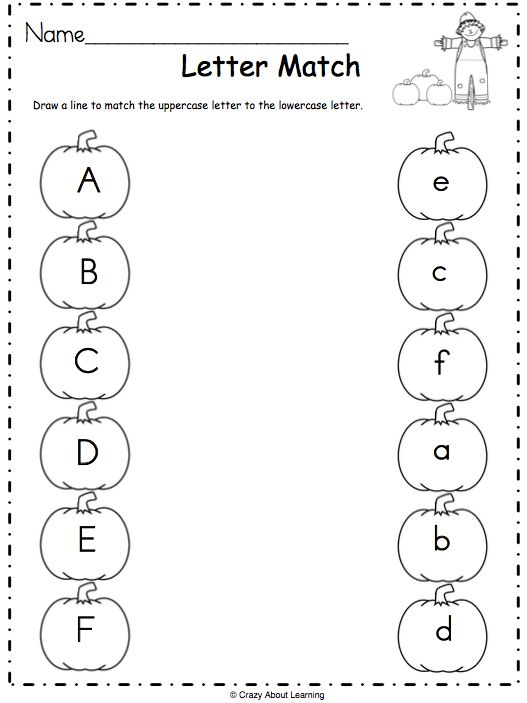 V. Nishcheva and connected it with the course of preschool rhetoric "You are a word, I am a word:". By this course "Rhetoric and Communication Development speeches" the children of our preschool educational institution are engaged in senior and preparatory group since 2009In January 2009 was a training seminar was held with elements modeling for educators "Integrated approach to solving problems for the development of communication speech", which clarified the knowledge of educators about the types work on the development of coherent speech in children; consolidated the skills of teachers in compiling long-term plans for a month according to a certain lexical topic; modified lessons from section "Forest stories" of the course "On the way to ABC" in accordance with the goals: ZKR, compiling a descriptive story.
V. Nishcheva and connected it with the course of preschool rhetoric "You are a word, I am a word:". By this course "Rhetoric and Communication Development speeches" the children of our preschool educational institution are engaged in senior and preparatory group since 2009In January 2009 was a training seminar was held with elements modeling for educators "Integrated approach to solving problems for the development of communication speech", which clarified the knowledge of educators about the types work on the development of coherent speech in children; consolidated the skills of teachers in compiling long-term plans for a month according to a certain lexical topic; modified lessons from section "Forest stories" of the course "On the way to ABC" in accordance with the goals: ZKR, compiling a descriptive story.
Appendix 1.
In our institution, the course "On the way to the ABC" 3.4 hours. are conducted by speech therapists, which allows competently deal with many problems during the implementation of the course "On the way to the ABC" (learning to read). In the preparatory group I work with letters, actually sound-letter analysis gives the best result. Not using tasks related to the "sound" reading of words (at the moment, the authors also refused such assignments). Children are encouraged to work letters or sound cards. I use activity approach (Leontiev A.N.) sound characteristics, i.e. the child during activities, empirically, independently the proposed scheme (algorithm) of activity can characterize any sound. Sound vowel if there is no obstruction in the mouth. consonant sound, if there is an obstruction in the mouth. The sound is loud if vocal folds work. The sound is solid speak firmly. In my work I use scheme, characteristics of sounds (Appendix 1, slide four).
In the preparatory group I work with letters, actually sound-letter analysis gives the best result. Not using tasks related to the "sound" reading of words (at the moment, the authors also refused such assignments). Children are encouraged to work letters or sound cards. I use activity approach (Leontiev A.N.) sound characteristics, i.e. the child during activities, empirically, independently the proposed scheme (algorithm) of activity can characterize any sound. Sound vowel if there is no obstruction in the mouth. consonant sound, if there is an obstruction in the mouth. The sound is loud if vocal folds work. The sound is solid speak firmly. In my work I use scheme, characteristics of sounds (Appendix 1, slide four).
When learning to read syllables, I use a primer Zhukovoy N.S. Reverse syllable when a consonant sound prevents the vowel from singing a song, and it turns out short. Direct syllable when the vowel teaches consonant to sing a long song. Sounds are inseparable and they merge into one melody (Appendix 1, slide 5).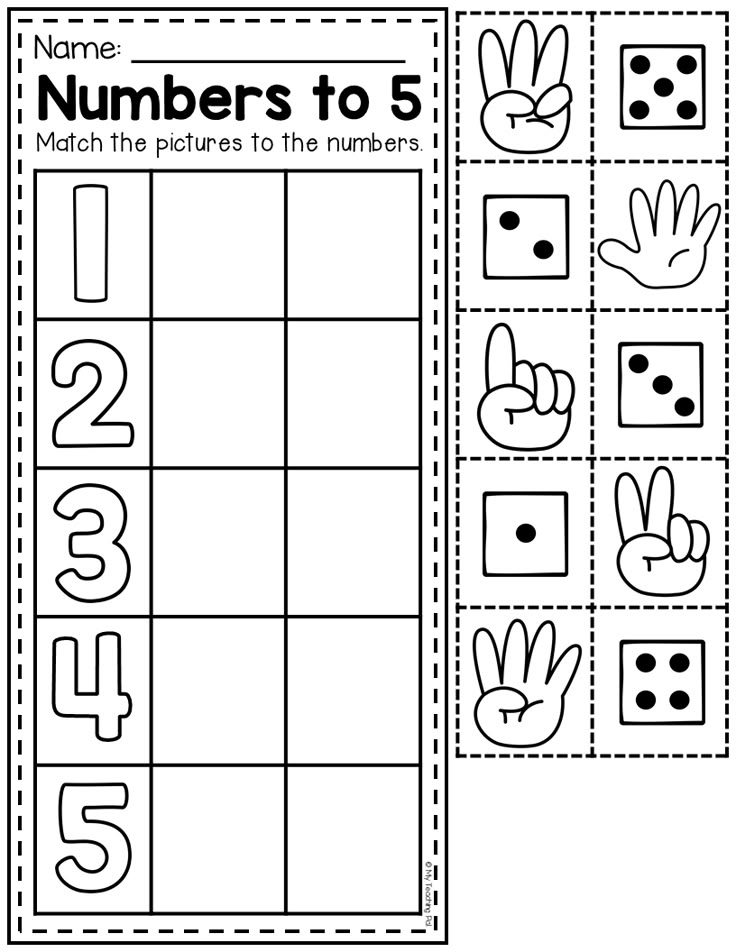 Hard consonants sing hard songs only with vowels A, E, O, U, Y (Pevtsov Street), soft consonants sing soft songs only with vowels I, I, Yo, E, Yu (street of Smiling singers). When working on sounds, I use the developed me allowance Zvuograd according to the methodological manual Vygotskaya I.G., Berkovskoy N.V. "Sound City, Letter City and Chrysostom" (Appendix 1, slide 2). We give the isolation of sound in a word gradually: first stressed vowel at the beginning word, then a consonant sound at the end of the word, and only then highlighting the vowel sound in the middle words in words like MAC, SOK. For determining position of sound in a word, sound analysis, laying out the sentence scheme using the manual developed by me "Sound boxes" (Appendix 1, slide 9). This allows the majority of preschoolers successfully learn material.
Hard consonants sing hard songs only with vowels A, E, O, U, Y (Pevtsov Street), soft consonants sing soft songs only with vowels I, I, Yo, E, Yu (street of Smiling singers). When working on sounds, I use the developed me allowance Zvuograd according to the methodological manual Vygotskaya I.G., Berkovskoy N.V. "Sound City, Letter City and Chrysostom" (Appendix 1, slide 2). We give the isolation of sound in a word gradually: first stressed vowel at the beginning word, then a consonant sound at the end of the word, and only then highlighting the vowel sound in the middle words in words like MAC, SOK. For determining position of sound in a word, sound analysis, laying out the sentence scheme using the manual developed by me "Sound boxes" (Appendix 1, slide 9). This allows the majority of preschoolers successfully learn material.
To increase children's interest in activities I use different games and educational tasks, combining them with the course "On the way to the ABC".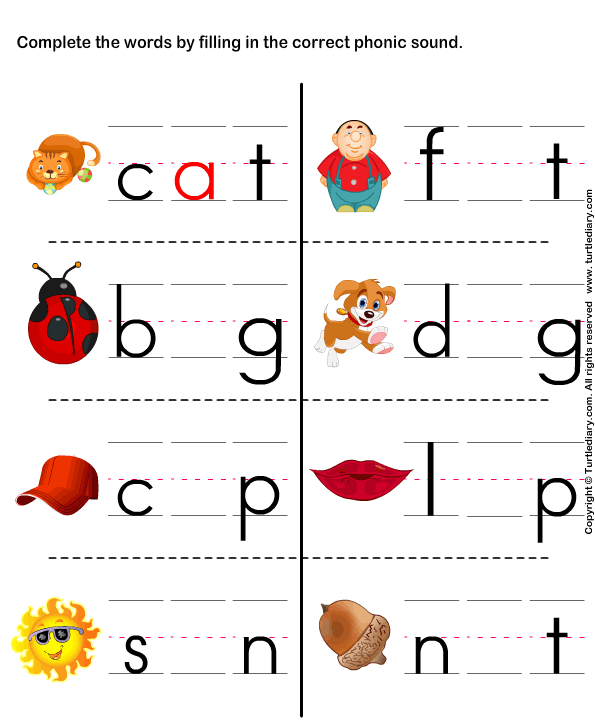 FROM September 2009 course "On the way to the ABC" (3, 4, 5 hours) educational program "Kindergarten 2100" are carried out using an interactive boards, an electronic bank of lessons on preparation for literacy. It allowed improve the quality of demo materials, made it possible to use video clips, increased the motivation of children in the classroom, as well as in in a playful way to develop the necessary skills with least time-consuming (Appendix, slide 7, 8).
FROM September 2009 course "On the way to the ABC" (3, 4, 5 hours) educational program "Kindergarten 2100" are carried out using an interactive boards, an electronic bank of lessons on preparation for literacy. It allowed improve the quality of demo materials, made it possible to use video clips, increased the motivation of children in the classroom, as well as in in a playful way to develop the necessary skills with least time-consuming (Appendix, slide 7, 8).
The first lesson of the course "On the way to the ABC" 3.4 hours. we spend it as a holiday: we invite children to journey through the country of Sounds (Appendix 1, slide 6). At the lesson, children receive a map - a diagram "Zvukograd", which will be filled within the entire course (Appendix 1, slide 3). At the end course we hold a holiday of correct speech with music directors kindergarten. The holiday of speech is not so much checking the knowledge of children, this is another opportunity empathize and rejoice in each other's successes, be a team and generally have fun (Appendix 1, slide 10, 11). Children on holiday receive certificates, medals (Appendix 1, slide 12). BUT any reward for a child is a confirmation his importance, so he will strive, to be singled out in the future.
Children on holiday receive certificates, medals (Appendix 1, slide 12). BUT any reward for a child is a confirmation his importance, so he will strive, to be singled out in the future.
Methodological developments:
- Diagnostic cards (senior, prep group).
- Stimulus material and methodological recommendations for diagnostic charts.
- Long-term planning for the development of communications speech and rhetoric (senior, preparatory Group).
- Advanced planning to prepare for literacy (senior group, preparatory group), which includes additional classes on topics: offer, stress, related words, prepositions, letters soft sign and hard sign.
- Lesson notes for preparation for training literacy (senior, preparatory group).
- Electronic bank of classes in preparation for literacy (senior, preparatory groups).
- Scenarios of holidays of correct speech.

Literature:
- Kislova T.R. On the way to the alphabet: Methodical recommendations for educators, speech therapists, teachers and parents to part 3.4 / under scientific edited by R.N. Buneev, E.V. Buneeva. - M.: Balass, 2003. - 128s.
- Kislova T.R. On the way to the alphabet: Methodical recommendations for educators, teachers and parents to part 1,2 / under the scientific editorship R.N. Buneeva, E.V. Buneeva. - M.: Balass, 1999. - 144 p. Il.
- Kislova T.R., Ivanova A.A. On the way to the ABC. A guide to the development of speech and preparation for learning literacy of preschoolers attending preparatory speech therapy groups. Ch. 5 (6-7 years). - M.: Balass, 2009. - 96s.
- I. G. Vygotskaya, N. V. Berkovskaya "Zvukograd, Bukvograd and Chrysostom" M: Linka - Press 1999.
Tasks:
Educational
- Introduce children to the sound and letter C.
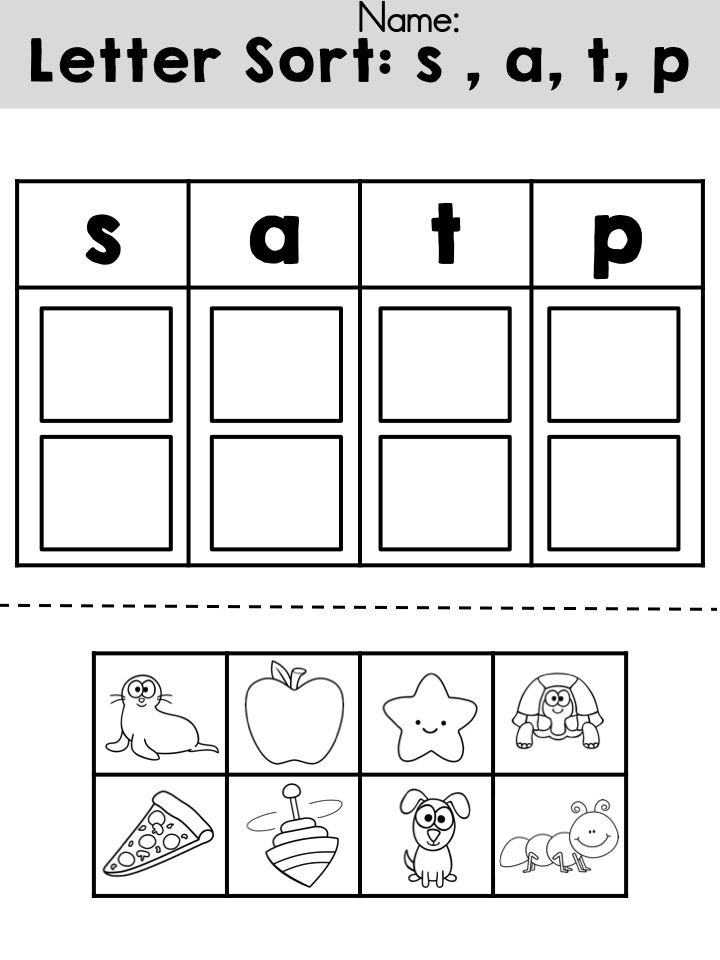
- Continue to learn to determine the position of sound in word.
- To form the skill of reading and writing.
- Practice word formation of nouns with using the suffix -IC-.
Educational
- Develop thinking, visual attention, general motor skills and coordination of speech with movement.
Educational
- Foster independence, skills collaboration in class.
Equipment: Multimedia complex, mirrors, Zvukovograd, notebooks, pencils, ball.
Course of the lesson
1. Organizational moment.
Visual gymnastics.
Breathing exercises.
- Tell us about the sounds [Z] and [Zb].
- How are they different?
- What did the little fox promise the zebra doctor?
2. Reporting the topic of the lesson.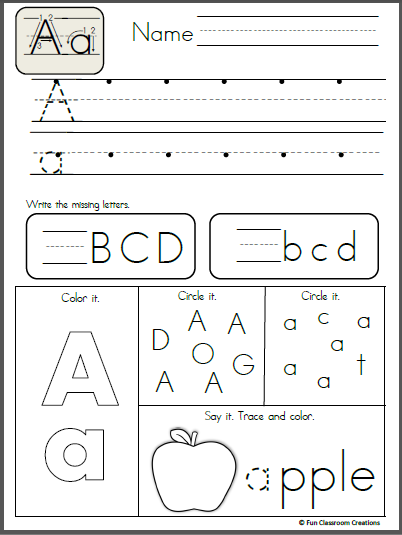
After making sure that everything is in order with the teeth and the Little Fox OK, the toys have moved on. travel. They did not notice when the horse came up. "Why aren't you at the circus?" - she asked them. From surprise, our friends are so were confused that they did not find what to answer her. "Today there is a big performance in the circus, - the horse continued. - Sit on me, I'll take you I'll take you."
On the way, a new acquaintance told me that she works in a circus and is called the Queen. "Are you wife of the king?" - asked the Little Fox. no, laughed the horse. - They gave me one nickname because I have a small a speck in the form of a crown." The Queen also said, that other animals work with her in the circus. This spring, many cubs appeared. When they grow up, they will also become circus artists like their moms and dads. And while they are still small, so they opened a special circus kindergarten.
"Oh! Queen. - You and I may not be in time for the end performance!" She advised her riders hold on tight and rushed into the whole support.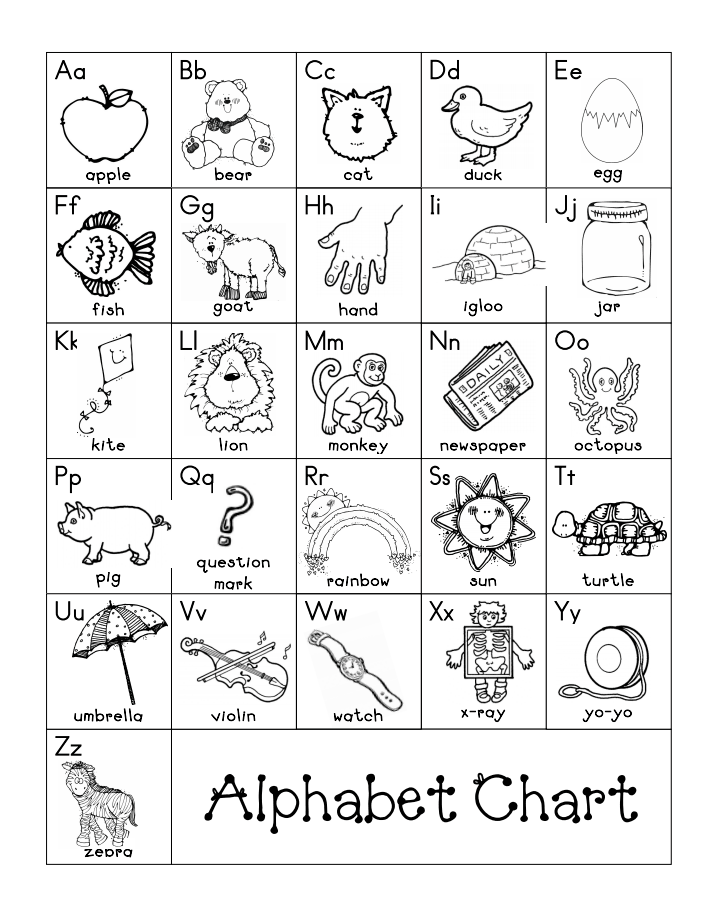
"Clock-Clock-Clock-Clock!" - pounded on the track her hooves, with every step bringing our friends closer to the circus - a fabulous palace of miracles.
- What sound is heard at the beginning of words: queen, king, circus
- Today we will talk about the sound [C].
3. Sound characteristics.
- Say [C] in front of a mirror. look and tell me what it sounds like.
(Consonant - language obstruction, deaf - voice folds do not work, always hard)
4. Isolation of sound in a word.
a) - Name the cubs of the circus children's garden and their mothers. Circle those whose names pronounced with the sound [C].
b) - How can one name everything that shown in the pictures? (Products).
- Name the dishes in which these products. If the name of the dish contains the sound [C], circle this product.
- Sugar is served in: (sugar bowl).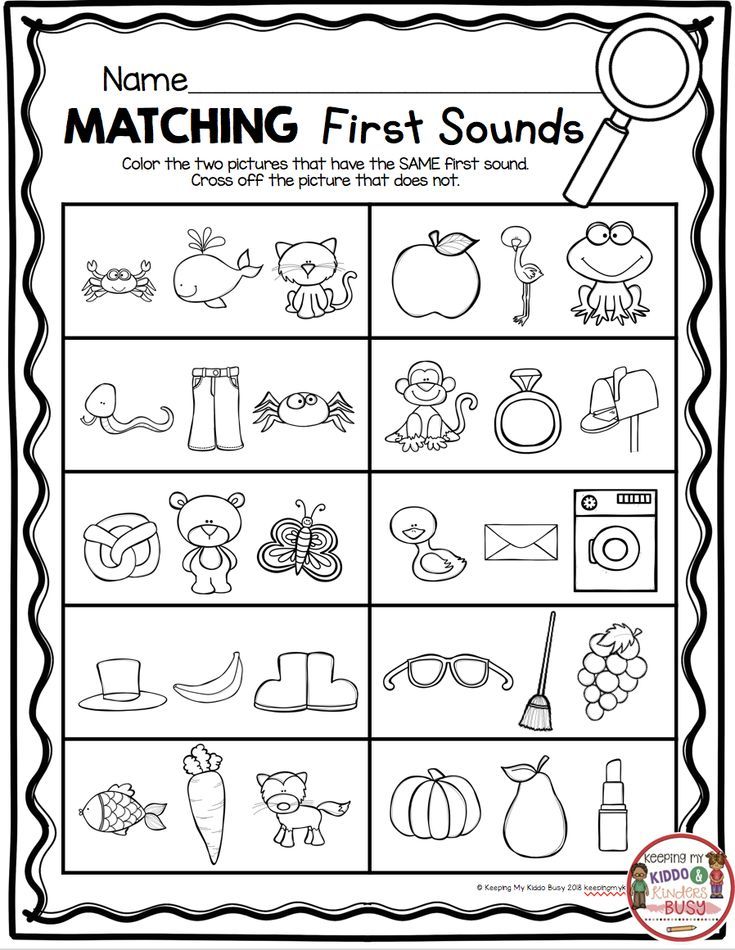 This word has sound [C]? Should I circle this picture?
This word has sound [C]? Should I circle this picture?
- Oil is served in: (butter dish). This word has sound [C]? Should I circle this picture?
- Soup is served in: (tureen). This word has a sound [C]? Should I circle this picture?
- Peppers are served in: (pepper box). This word has sound [C]? Should I circle this picture?
- Salt is served in: (salt shaker). This word has sound [C]? Should I circle this picture?
- Bread is served in: (bread box). This word has sound [C]? Should I circle this picture?
- Sweets are served in: (candy bowl). In this word is there a [C] sound? Should I circle this picture?
Determining the position of sounds in a word.
- Determine in which part of the name of the pictures sound [C] is heard, and paint over in blue corresponding cells.
- I will swap syllables in words, and you name words in which I changed syllables.
5.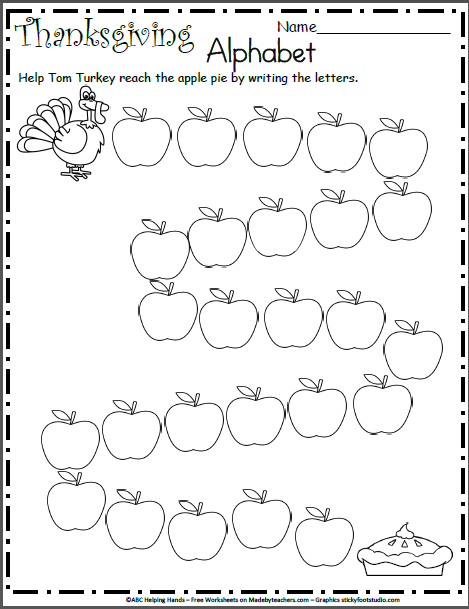 Physical education.
Physical education.
| Clock, clamp, clamp, clamp, I am a horse, gray side! I knock with my hooves, If you want, I will. | Children alternately stamp their feet, hands on belt. |
| We will ride the roads Now gait, then gallop, | They run in a circle with side steps. |
| Let's graze in the meadow, Let's rest on the beach. | Stop, bend over forward, as if grazing, at the end they sit on squat while resting. |
Ball game "Change the word".
a) teacher (teacher), educator, artist, master, dancer, apprentice, trainer, guide, reader, writer, birthday boy;
b) swims (swimmer), sings, forges, cunning, wise, skillful, daring, stupid, young.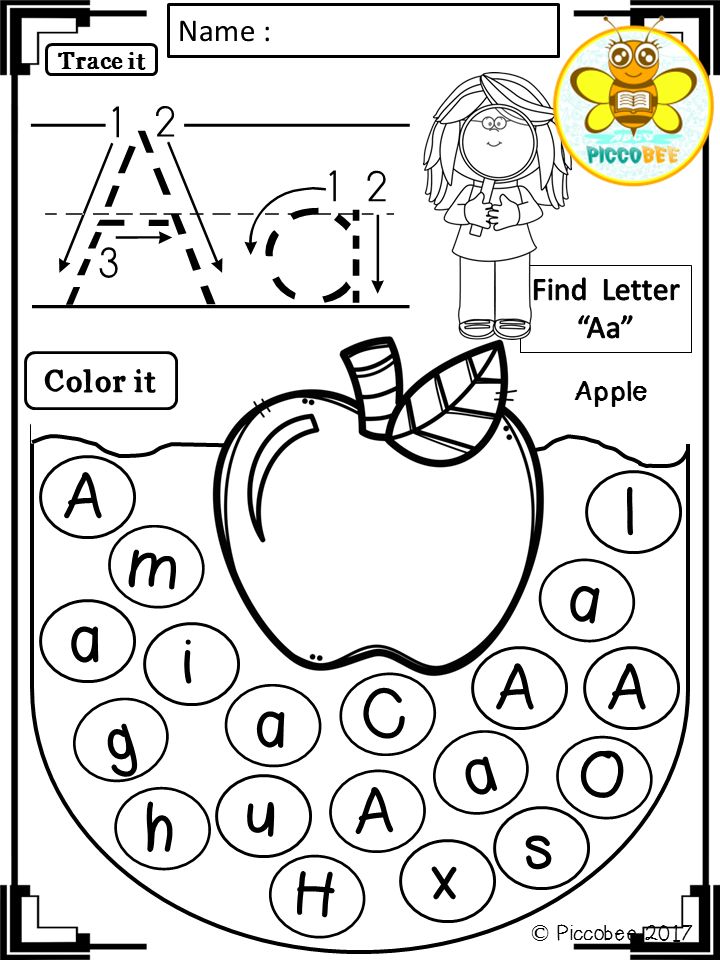
Introduction to the letter C.
This is the letter C
With claw end
Claw - scratch
Like a cat paw.
Reading syllables.
- Read the syllables and find words with these syllables, match the syllables with the pictures.
- TSY - birds, buttons;
- CE - towel, saucer;
- CA - sheep, mill;
- CO - ring, egg.
7. Finger gymnastics "Friendship".
8. Typing a letter in a notebook.
9. Puzzles.
10. Drawing up sentences on the picture.
- Make a sentence from the picture. (Martin built a nest under the roof of the house. Heron built a nest in the swamp. The stork made a nest on the roof. Owl svila nest in a hollow. The starling built a nest in birdhouse.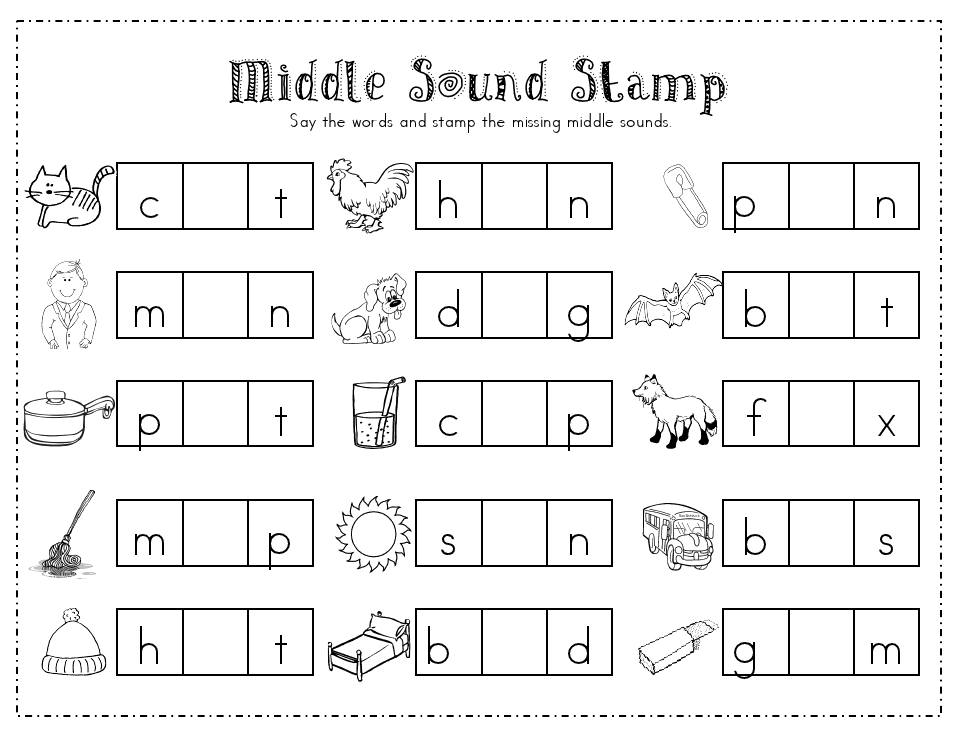 The crow built its nest on a birch.) Name small words, lay out a diagram of one suggestions.
The crow built its nest on a birch.) Name small words, lay out a diagram of one suggestions.
11. Summary of the lesson.
- What did you learn about the sound [C]?
Kindergarten № 3 Vasileostrovsky district
| Glad to welcome you to my page! | |
| About me: Teacher of the highest qualification category. Honorary Worker of General Education of the Russian Federation. I have been working in this kindergarten for over 30 years. I have been an educator since 2018. I own the technology "Teaching children of preschool age with literacy." I have developed the "Literacy-ka" program, which I am successfully implementing in kindergarten No. 3 "Andreyka". On the page you will find consultations for parents, master classes on teaching children to read and write, presentations. The program was drawn up taking into account the requirements of the federal state educational standard for preschool education and with a focus on the federal state educational standard for primary general education, aimed at: - to develop in children the ability to navigate in the sound-letter system of their native language and, on this basis, the development of interest and reading abilities; - for the speech and cognitive development of preschoolers. The program is designed taking into account the age and individual characteristics of children. The program is designed for children 6-7 years old. Classes lasting 20 minutes, 2 times a week. |
Presentation for the lesson "Introduction to the alphabet" for the additional author's program "Literacy"
Introduction to the alphabet»
Purpose: to give children knowledge of the alphabet.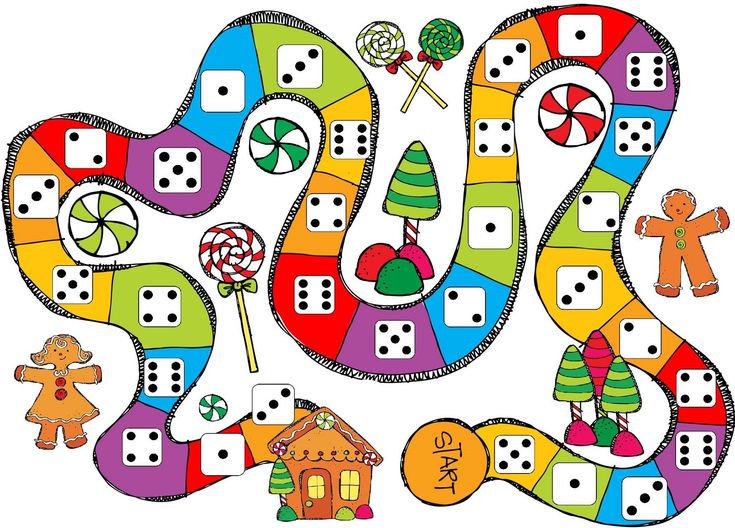
Tasks: to give the concepts of oral and written speech, to introduce the concepts of "sound" and "letter", to teach to distinguish sound (a) from speech, finding the sound A in words (its position).
To develop children's phonemic hearing, speech, small muscles of the hands.
To teach communication in a team.
Material: alphabet, pencils, notebook, pictures, presentation on GCD.
Stroke NOD:
Educator:
What is sound? Tell!
Knock and rustle,
Shout and ring,
Sound, try, catch up!
Even if you approach,
Very carefully,
You won't see, you won't find,
But you can hear.
Our world is full of sounds.
What is sound? All that we hear and pronounce are called sounds.
Close your eyes and listen carefully to the sounds around you. What did you hear?
Speech is oral when we speak and written when we write.
When we speak, we pronounce sounds, they can be written in letters.
What is a letter? Letters are symbols for recording sounds.
Display alphabet poster
Teacher:
What is the alphabet?
You guys know him.
The letter always stands in it,
In its special place.
We learn, we learn by heart
We are together the alphabet,
To help him find it,
In dictionaries, where necessary.
A bit of history about the origin of the Russian alphabet.
The letters of the Russian alphabet were created on the basis of the Greek alphabet. The Slavic alphabet Glagolitic is considered the first Russian alphabet. The name of this alphabet came from the ancient word "verb" - which meant to speak.
Such an alphabet was not convenient, because the letters sounded like this: psi, xi, izhitsa, fita, omega - they were very difficult to remember and make words.
Tsar Peter I removed 12 difficult letters from the alphabet.
There are 33 letters in the modern alphabet. Ten vowels and two letters b - b have no sound, but they are needed in the Russian alphabet. The rest of the letters are consonants.
Ten vowels and two letters b - b have no sound, but they are needed in the Russian alphabet. The rest of the letters are consonants.
The letters are in a certain order - each letter in its place.
And the alphabet itself is needed everywhere to restore order, and therefore it is necessary to learn it by heart. Without knowing the alphabetical order, it is difficult for us to use a dictionary, it is difficult to find information in encyclopedias and reference books. You will not be able to do well in school and work when you are an adult.
Teacher:
Let's sing a song with the letters A, O, U, s, I, E. Those sounds that are pronounced with a voice and that can be sung are called vowels. The air passes freely, without encountering any obstacles.
What does the doctor ask you to say when he examines the throat? (A-A-A-A).
What do we shout when we get lost in the forest? (A-u-u-u-)
How does a baby cry, who has not yet learned to speak? (U-ah-ah-ah-)
Game "name the first sound of the word"
Rules: highlighting the first sound (a) in words.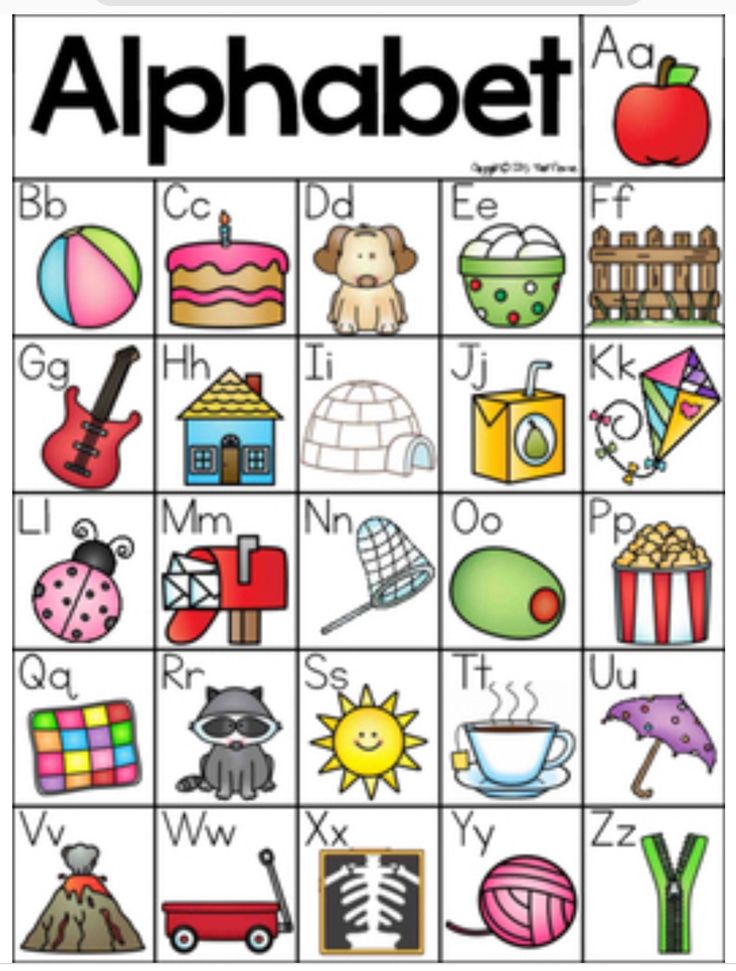 Words are found by children in pictures (watermelon, stork, aster ...).
Words are found by children in pictures (watermelon, stork, aster ...).
Discover the sound game
Rules: children clap their hands if they hear the sound (a) in a word.
Words - table, chair, stork, bank ...
Teacher:
A vowel sound can be written with a letter, which is called the vowel a. We hear the sound, we pronounce it, and we write and see the letter. Show the letter, its place in the alphabet.
Game "What does the letter A look like?"
Teacher:
A - the beginning of the alphabet,
That is what she is famous for.
And it's easy to recognize her:
She puts her feet wide.
"A" has an important look -
Starts the alphabet,
Walks proudly and easily,
Sets his feet wide.
And, of course, the letter "A",
Likes tasty words.
Apricot, watermelon, quince,
That's really what it is.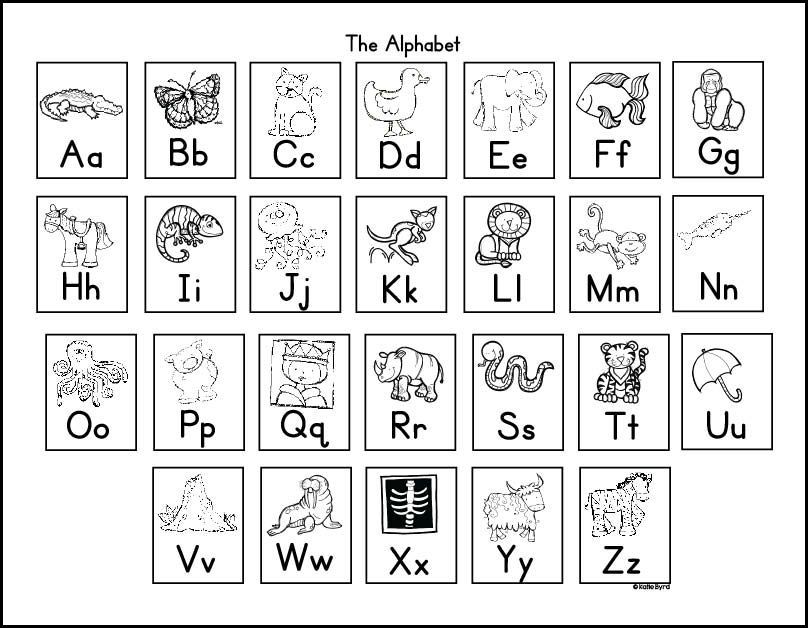
Children in notebooks print the letters A, a.
Say the word game
It's as big as a soccer ball,
If it's ripe, everyone is happy.
It tastes so good!
And his name is ... watermelon.
A middle-aged man with a mustache and beard,
Loves children, treats animals,
Nice looking.
He is called ... Aibolit.
Letters-badges, like fighters on a parade,
Lined up in a strict order.
Everyone stands in the appointed place,
And the system is called ... the alphabet.
Physical education "Stork"
Children recite a poem, repeating all movements after the "stork":
- Stork, stork, long-legged,
Show me the way home.
Stork answers:
- Stomp with your right foot,
Stomp with your left foot.
Again - with the right foot,
Again - left foot,
After - with the right foot,
After - left foot,
Then you'll come home.
Working with the orange template
Rules: hatch only in the specified direction, do not go beyond the contours of the picture.
Game "Who is attentive?"
Rules: children must remember the words with the sound (a) that you will meet in the fairy tale by G. Yudin “Why A is the first?”
Teacher:
“There was a terrible noise in the room. All the letters came out of the alphabet and argued loudly: why is this A the very first letter alphabet ?
Down with impostor A! shouted the vowels.
- Long live "Abracadabra"! (i.e. confusion).
What is it doing, eh? the hissers hissed.
- The letter with which begins angina and shark, put at the head of the alphabet! Wow jokes!
That's right, - the consonants thought silently, - it's not for nothing that the most delicious things - watermelon, orange, apricot, pineapple - begin with A.
But the letter Y screamed the loudest.
- I don't understand why it's the first A and not me?!
And therefore, - said A, who had been silent until now, - that the very first word of every baby begins with A.
- What is this word? - I did not let up.
- Agu, - said A.
- And besides, I look like admiral standing on the captain's bridge. And everyone knows that the admiral must always be ahead! So! said the firm sign.
Words - alphabet, alphabet, abracadabra, tonsillitis, shark, watermelon, orange, apricot, pineapple, admiral.
Teacher:
The letter A can be at the beginning, middle and end of a word. Stand up those children whose names contain the sound A.
Finding the position of the sound A in the words-names.
Total:
What new did you learn at the lesson? What did you like the most?
Literature:
1. Order of the Ministry of Education and Science of the Russian Federation "On approval of the state educational standard for preschool education" dated October 17, 2013
No. 1155
2. The author's program "Literacy-ka" Evseeva T.G.
3. N.V.Durova Phoneme. How to teach children to hear and pronounce sounds correctly M., 2000
4. A.V. Kochergina Learning the alphabet while playing - M: "5 for knowledge", 2007
5. O.S.Ushakova, E.M. Strunina Methods of speech development in preschool children M., Vlados, 2002
Workshop
"Preparation for teaching literacy in kindergarten and at home"
Conducted by: additional education teacher Evseeva T.G.
Purpose: to clarify the parents' perception of the process of preparing for literacy.
Tasks: to activate the knowledge of parents about sounds, syllables, words, sentences; to acquaint parents with the content of the work on preparing the hand for writing; motivate to work with the child.

